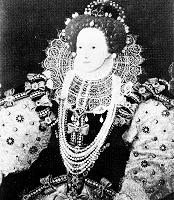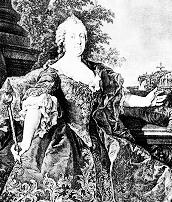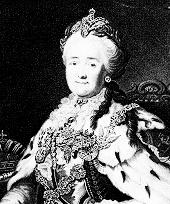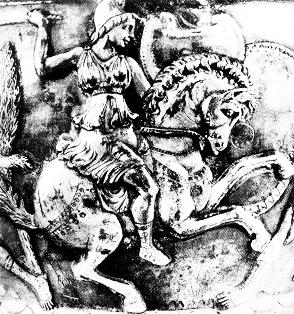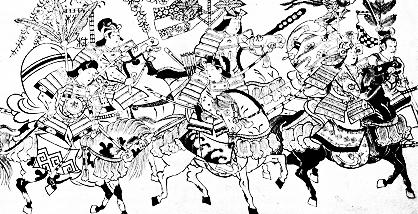|
|
|||||||||
|
|
THE BEGINNINGS OF FEMINISM IN EUROPE
(left) Elizabeth I. (1533-1603) Queen of England (right) Maria Theresa (1717-1780) Archduchess of Austria, Queen of Hungary and Bohemia, Empress of the Holy Roman empire
Catherine II the Great (1729-1796) Empress of Russia Or the Womanish Man (1620) which declared: "We are as freeborn as Men, have as free election and as free spirit, we are compounded of like parts, and may with like liberty make benefit of our creations." It went on to demand equal treatment for both sexes and to equate the oppression of women with slavery. In the 17th century a few women, such as the Swedish queen Christina and the French and English writers Mme, de La Fayette and Aphra Behn continued to excel as scholars, novelists and playwrights. In France, learned women began to cultivate "salons," i.e. sexually integrated intellectual circles where good manners, wit, and erudition were esteemed and exercised. That these efforts were not appreciated by everyone can be seen in Moliere's comedies Les Precieuses Ridicules and Les Femmes Savantes which satirize female attempts to enter "high culture." Still, the influence of women on French intellectual life was not diminished and has, in fact, continued to this very day. From Mme. de Sevigne to Mme. de Stae'l, George Sand, and Si-mone de Beauvoir, French women have held a position of eminence in French literature. However, while female intellectual brilliance found recognition in exceptional cases, women were not given any political rights. As a matter of fact, with a new growing cult of "nature" even an intellectual education for women came to be seen as inappropriate. jean-Jacques Rousseau, in his influential Emile (1762) flatly stated: "The education of women should always be relative to that of men. To please, to be useful to us, to make us love and esteem them, to educate us when young, to take care of us when grown up; to advise, to console us, to render our lives easy and agreeable. These are the duties of women at all times, and what they should be taught in their infancy." For a very long time this remained the accepted view. When, in 1 789y the French Revolution broke out, some attempts were made to secure equal rights and equal education for women, most notably by the Marquis de Condorcet in his essay The Admission of Women to Full Citizenship (1790). Unfortunately, Condorcet himself soon became a victim of the revolutionary "reign of terror" and his proposal, along with others, was quickly repudiated. Indeed, in 1793 the National Convention suppressed all women's clubs, societies, and "salons," and denied women all political rights. In the meantime, Talleyrand had formulated the educational policies of the new government which offered girls public education up to the age of eight, after which they were to be kept at home. The English writer Mary Wollstonecraft, who had observed the French Revolution at close range, and who admired both Rousseau and Talleyrand, nevertheless felt compelled to protest against this reactionary trend. She therefore challenged both of these male authors in her Vindication of the Rights of Women (1792). In direct response to Rousseau she affirmed: "Woman was not created merely to be the solace of man. ... On this sexual error has all the false system been erected, which robs our whole sex of its dignity." Instead, she demanded full and equal education for all women as a means of escaping sexual oppression. The invocation of "nature" in defense of oppres- WOMEN AS SOLDIERS One of the most famous and successful military commanders of all time was a teenage girl: Joan of Arc (1412-31 A,D.) However, for most of human history women have been denied any active role in the military. Curiously enough, the myths and legends of many cultures tel! of soldier-like women and even of whole female armies.
(Above) Ancient Roman sculpture of Amazon in combat. The Amazons were a legendary nation of fighting women. (Below) The Amazon motif is also found in Japanese art, as can be seen in this old anonymous woodcut.
sive policies left her unconvinced. Rousseau had offered this seemingly "objective" observation: "Boys love sports and noise and activity: to whip the top, to beat the drum, to drag about their little carts; girls on the other hand are fond of things of show and ornament—trinkets, mirrors, dolls." Woll-stonecraft now replied: "Little girls are forced to sit still and play with trinkets. Who can say whether they are fond of them or not?" For her, the different behaviors of males and females arose out of "unnatural" distinctions created by society. In demanding the abolition of these distinctions, she argued for equal opportunity and equal rights. Women should enter all professions and become active in politics. The fight for the "Rights of Man" was more properly broadened to include the "rights of humanity". Mary Wollstonecraft's book made her famous, or rather notorious, in her time, but after her untimely death was soon forgotten. Instead, the following generations saw the great manifesto of feminism in John Stuart Mill's On the Subjection of Women (1869). This brilliant essay by one of the most eminent English thinkers had a deserved influence on the women's movement in Europe and America. Mill wrote it after the death of his wife who had inspired it and who, in a sense, must be considered its co-author. Mill, not content with equal educational opportunities for both sexes, demanded the vote for women and, with others, himself founded the first women's suffrage society. Yet it was not until our century and after an intense struggle by "suffragists" like Lydia Becker and Emmeline Pankhurst and her daughters that English women were finally admitted to the ballot box. |

